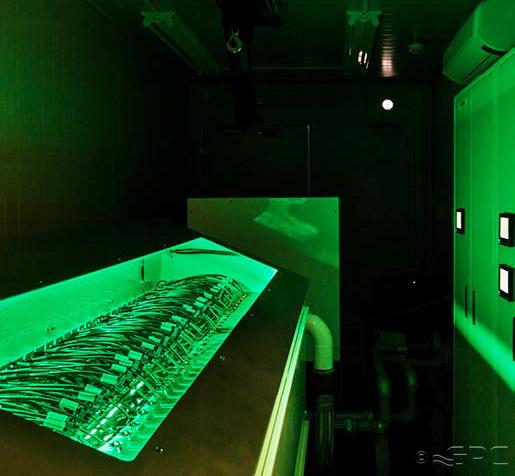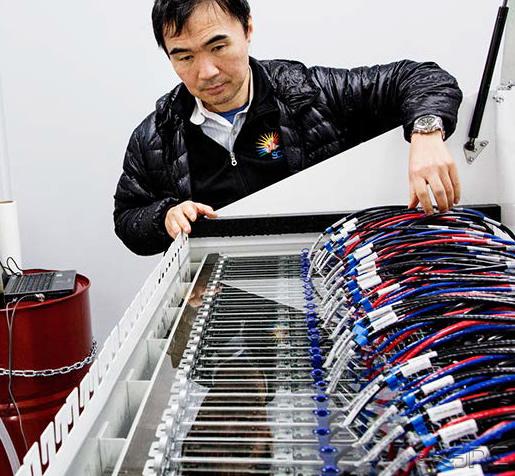“TOKYO INSTITUTE OF TECHNOLOGY GRC’S CARNOTJET SYSTEM ENABLED THE TSUBAME-KFC TO RANK #1 ON THE GREEN500 LIST OF THE MOST EFFICIENT SUPERCOMPUTERS IN THE WORLD.”

Installation Details
- Location: Tokyo, Japan
- Industry: Academic
- Capacity (in kW): 35.39
- Highlight: Ranked#1 on the Green500 for two consecutive listings
- Customer Since: 2013
The Challenge
Tokyo Tech routinely runs experiments in state-of-the-art, high-performance supercomputing with their TSUBAME-KFC (Kepler Fluid Cooling) prototype computers.
Accordingly, they were gearing up a new TSUBAME model to run at exascale speed (a billion-billion calculations per second) while vying for the top Green500 ranking as the world’s most power-efficient supercomputer.
The new prototype would utilize power- and heat-intensive NVIDIA GPUs. So the team knew they would have to employ an advanced, super-efficient cooling method if they hoped to achieve their goals.
The GRC Solution
After extensive testing with air-cooling strategies, Tokyo Tech soon realized that only single-phase liquid immersion cooling would sufficiently dissipate the heat of the computer’s core components while reducing power consumption enough to meet the project’s objectives.
With this in mind, they engaged single-phase liquid immersion cooling pioneer GRC.
We installed an ICEraQ™ micro-modular, racked-based cooling system running our ElectroSafe™ coolant in a 20’ container outside their building.
Results
Thanks in great part to GRC’s ICEraQ solution, Tokyo Tech was able to attain both the performance and “green” goals of their new supercomputer:
The Green500 ranked the TSUBAME-KFC number one in the world in power efficiency—with a 24% lead over the second-ranked machine. This improved on the previous Green500 #1 record by over 40% and gave Tokyo Tech their second Green500 win using GRC immersion cooling solutions.
In addition, the machine itself consumed only 28.9 kilowatts of power, the pump and cooling tower a mere 2.60 kilowatts combined, for an apparent PUE of just 1.09.
About Tokyo Institute of Technology:
Tokyo Tech is the top national university for science and technology in Japan with a history spanning more than 130 years. The Institute has 3 schools with 23 departments, 6 graduate schools with 45 departments, and many research institutes spread over its Ookayama, Suzukakedai and Tamachi Campuses. Of the approximately 10,000 students, half of them are undergraduates and the other half are graduate students. International students number 1,200. There are 1,200 faculty and 600 administrative staff members. In the 21st century, the role of sci-tech universities has become increasingly important. Tokyo Tech continues to cultivate global leaders in the fields of science and technology and contributes to the betterment of society through its research focusing on solutions to global issues. The Institute’s long-term goal is to become the world’s leading sci-tech university.









